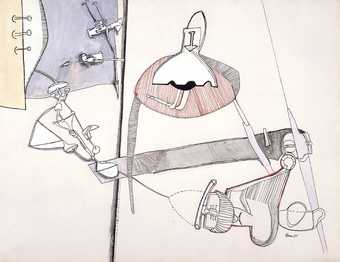This double question – the exact meaning of which can depend on the inflection of the voice saying it – embraces a wide range of issues and concerns about the pros and cons of replication. Looking ahead, it seems to me that as individuals we may conclude that a case-by-case review of various factors – including our knowledge of the artists’ intentions and the feasibility of creating adequate copies or reconstructions – is sufficient to allow us to proceed with some confidence in our judgements. Or we may come to feel that, however relevant these factors are, they are still not quite enough to allow us to be fully cognisant of the implications of the act of replication and therefore we should resist the various forces pulling us towards the making of new versions of lost or disappearing works. But, if I may, I should like to pause for a moment and make a few comments about why we are considering this question as a question now.
As we know, there was a heyday of the making of replicas and reconstructions in the 1960s and 1970s. The works in question tended to be lost or destroyed works by modernist pioneers of the 1910s and 1920s, and their replication seems to have been undertaken without too much soul-searching. For that generation of museum directors and curators in particular, the recovery of the lost history of modernist sculpture was more or less self-evidently valuable for basically educational reasons.
For our part, we are of a generation that has to face the particular difficulties presented by the ephemeral works made in the 1960s, often by artists who were fundamentally opposed to the conserving, preserving role of the museum. The artists are often no longer with us, and those who claim the authority to make decisions for these artists on the basis of their personal or professional contact with them know, too, that they need to establish some clear view about this matter while they are still in a position to do so. Right now, it is hard to imagine what will be available to be seen in a hundred years time of the work of Roth, Hesse or Oiticica, to name some of the case studies included in the papers, and for this very practical reason the topic is of urgent concern.
At the same time, in the field of contemporary art, we are used to the practice of remaking works that exist only when displayed and are familiar with the concept of works of art that have no physical presence at all. All this has challenged our understanding of the status of the art object, and it seems to me that the papers for this workshop evidence a tension between two camps within our professions and within our institutions.
Here I was particularly struck by a phrase of Ann Temkin, quoted by Roger Griffith: ‘It often seems, we are dedicated to preserving something larger than individual works of art; we are dedicated to preserving the fiction that works of art are fixed and immortal.’ We all recognise the historic roots of this fiction, which are also embedded in the histories of our various professions. But there is also another view, reflecting broad swathes of contemporary practice, which sees no absolute necessity for this correlation of author and object, fixed identity and specific time.
The two approaches normally simply coexist within our professions and within our institutions, but the issue of replication, I believe, is challenging in part because it throws light onto the profound differences between these two approaches. Differences that are threatening to make it very difficult to act or not to act with any degree of confidence. And at the same time, our experience of the inadequacies of replicas – I recall Sturtevant’s phrase that replicas ‘possess veracity but unfortunately eliminate the artist’ – and, for some, a simple distaste for simulacra, have further complicated the picture for our generation.
None of this, I realise, is to offer a solution to the issues but I should simply like to note that what is at stake in the uncertainties about this question experienced within public museums is an unresolved tension within the professions involved in the decision to replicate works and about the status and definition of the art object today. Is it adequate, and intellectually coherent, to adopt one set of concerns and scruples for art works that adhere broadly to one view of the art object, and another set of different concerns and scruples for art works in which the object is dematerialised? This would be the logic of the ‘rules of the game’ of which Walter Grasskamp has spoken so elegantly, but it places upon those dealing with the question of ‘why/why not replicate?’ the unaccustomed, and thus far uncomfortable, burden of operating two different systems of decision-making.


